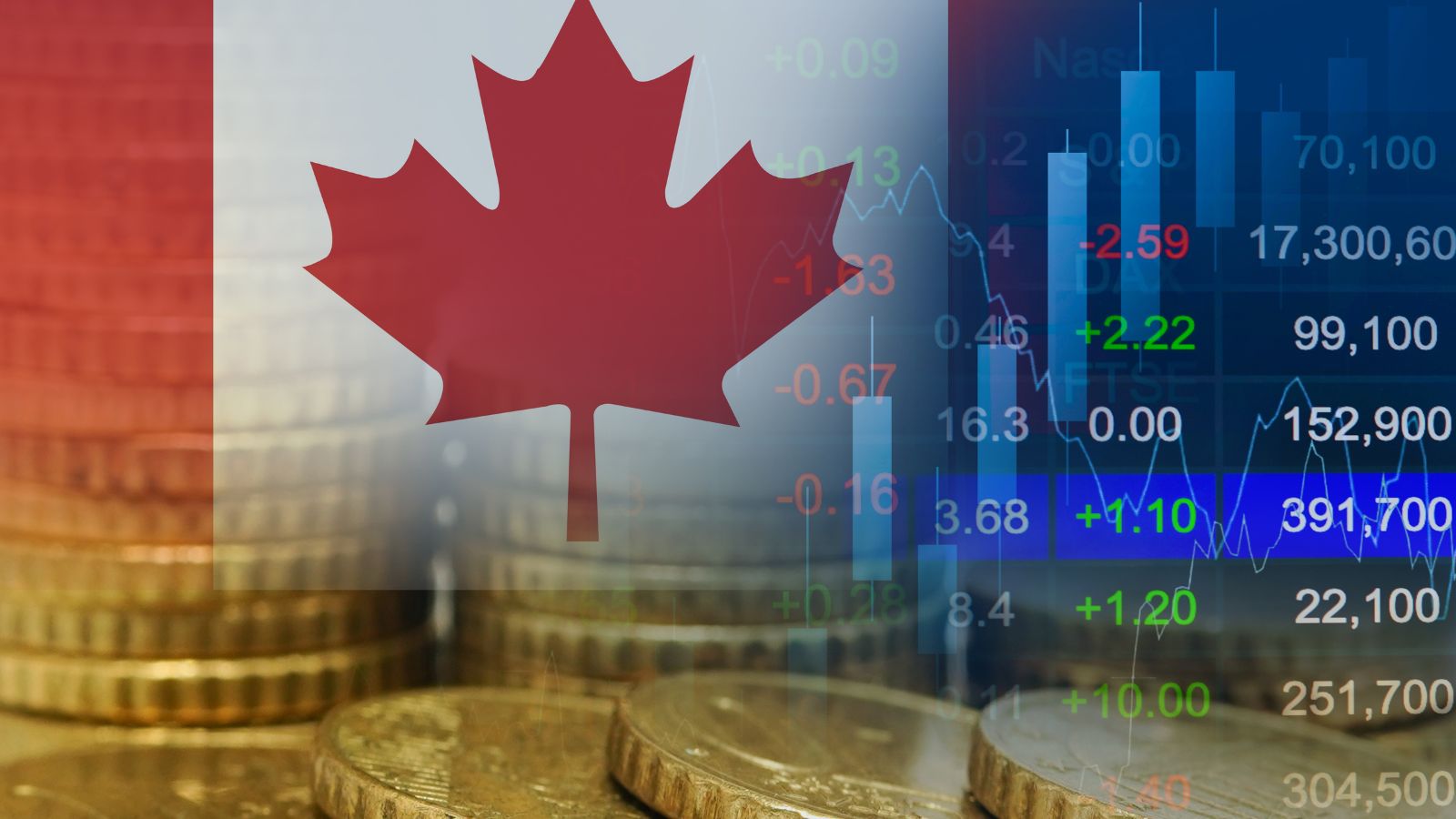Canada’s economy is often viewed through the lens of its resource sector, but the real story runs much deeper. While oil, timber, and minerals have long shaped perceptions, a multitude of lesser-discussed assets quietly drive growth and resilience. Here are 24 lesser-known strengths that bolster the nation’s economic health.
Stable Banking System

Canada’s banking system has long been recognized as one of the world’s most stable, withstanding global crises more effectively than most. Unlike the highly fragmented banking sectors seen elsewhere, Canada’s major banks are well-regulated, adequately capitalized, and enjoy high consumer trust. The World Economic Forum has repeatedly ranked Canadian banks among the soundest globally. Also, prudential oversight by the Office of the Superintendent of Financial Institutions (OSFI) and a conservative lending culture help maintain systemic strength. This stability reduces risks to both businesses and households, playing a significant role in investor confidence and foreign direct investment.
Diverse Immigration-Fueled Workforce

Immigration has become an essential pillar of Canada’s economic model. With an aging population and low birth rates, skilled immigration helps fill labor gaps and sustain population growth. Canada’s points-based immigration system prioritizes education, skills, and work experience, making its immigrant workforce highly productive. In sectors such as technology, healthcare, and construction, immigrants have significantly helped offset workforce shortages. Moreover, international students contribute to both the education sector and the broader economy.
High-Quality Public Infrastructure

Canada has consistently invested in its public infrastructure, from transportation networks to digital connectivity. Its national highway systems, ports, and airports ensure efficient movement of goods and services across vast distances. Additionally, urban infrastructure projects, particularly in cities such as Vancouver, Toronto, and Montreal, continue to attract global talent and business. Investment in broadband access has extended digital reach to many rural communities, supporting remote work and digital commerce. Additionally, the federal and provincial governments work closely together on infrastructure planning, and the Canada Infrastructure Bank provides further support for long-term growth through strategic investments.
Global Trade Agreements

Canada has signed an impressive number of bilateral and multilateral trade agreements, granting it preferential access to more than 50 countries. Key pacts include the Canada-United States-Mexico Agreement (CUSMA), the Comprehensive Economic and Trade Agreement (CETA) with the EU, and the Comprehensive and Progressive Agreement for Trans-Pacific Partnership (CPTPP). These agreements allow Canadian exporters to reach over 1.5 billion consumers under reduced tariffs and regulatory harmonization. Trade diversification reduces dependence on any one market and strengthens Canada’s bargaining power.
Resilient Housing Market

Although home prices in Canadian cities often make headlines for their high costs, the country’s housing market has shown remarkable resilience. Regulatory oversight, including mortgage stress tests and loan-to-income limits, has helped mitigate risk. Unlike in the U.S. subprime crisis, Canadian banks avoided widespread mortgage defaults due to more stringent lending practices. Real estate also remains a significant contributor to national GDP, supporting construction, legal services, and retail sectors.
Responsible Natural Resource Management

While rich in resources, Canada’s real strength lies in responsible extraction and management. Federal and provincial regulations ensure environmental standards are met while extracting minerals, timber, and fossil fuels. The country has made significant strides in sustainable forestry and is increasingly prioritizing low-carbon approaches in the energy sector. Resource royalties fund public services and infrastructure. Moreover, Canada invests heavily in environmental remediation and Indigenous consultation, which supports long-term viability and social license to operate.
Strong Legal and Regulatory Framework

Canada’s consistent and transparent legal framework supports contract enforcement, intellectual property rights, and investor protections. It ranks highly on the World Bank’s Ease of Doing Business indicators, particularly in starting a business and protecting minority investors. Regulatory agencies, such as the Competition Bureau and the Canadian Radio-television and Telecommunications Commission (CRTC), ensure fair competition and consumer protection. Provincial securities regulators oversee capital markets with increasing coordination through organizations such as the Canadian Securities Administrators.
Growth in Clean Technology

Clean technology is a rapidly growing sector in Canada’s economy, with over 3,000 companies developing solutions that range from carbon capture to renewable energy. Canada ranks among the top countries for clean tech innovation, with firms like CarbonCure, General Fusion, and Svante gaining global attention. The federal government has also dedicated billions of dollars through programs like the Net Zero Accelerator and the Strategic Innovation Fund. The sector is not only helping reduce emissions but also creating high-skilled jobs and export opportunities.
Competitive Corporate Tax Environment

The country maintains a relatively low effective corporate tax rate compared to other G7 nations. The combined federal-provincial tax rate for businesses averages around 26.5%, which is lower than in the U.S. or Japan. Additionally, small businesses benefit from a significantly reduced rate on their first $500,000 of income. Tax credits for research and development, digital transformation, and green innovation provide further incentives for business investment.
Highly Educated Workforce

Canada consistently ranks among the world’s most educated countries, with over 60% of adults holding post-secondary qualifications. Universities like the University of Toronto, McGill, and UBC are globally recognized, and Canada is a top destination for international students. The country also supports lifelong learning through trade programs, community colleges, and online platforms. High levels of literacy and digital skills significantly contribute to labor productivity and the adoption of technology. This educational advantage supports competitiveness in knowledge-intensive industries such as finance, biotech, and artificial intelligence.
Strong Pension and Retirement Funds

Public and private pension funds in Canada are among the most sophisticated in the world. The Canada Pension Plan Investment Board (CPPIB) manages over $500 billion in assets globally and follows a diversified, long-term investment strategy. Other major funds, such as the Ontario Teachers’ Pension Plan and Caisse de dépôt et placement du Québec (CDPQ), are also significant global players. These funds contribute to financial market stability and provide reliable retirement incomes for millions.
Booming Technology Ecosystem

The technology sector in Canada has expanded rapidly, with hubs in Toronto, Vancouver, Montreal, and Waterloo. Startups and established firms thrive in areas like fintech, AI, quantum computing, and gaming. Additionally, government support, through programs such as SR&ED tax credits and IRAP grants, reduces barriers to innovation. The talent pool is deepened by world-class universities and immigration policies that attract skilled tech workers. Plus, major global firms, including Google, Amazon, and Microsoft, have expanded R&D operations in Canada.
Sound Fiscal Management

Despite pandemic-related deficits, Canada maintains a relatively low debt-to-GDP ratio among G7 nations. The country has a track record of fiscal prudence, having balanced budgets in pre-pandemic years and issued long-term bonds at low interest rates. Independent institutions, such as the Parliamentary Budget Officer, enhance transparency, while the Bank of Canada ensures monetary stability. Federal-provincial coordination, though complex, has largely prevented unsustainable fiscal paths.
Dynamic Small Business Sector

Small and medium-sized enterprises (SMEs) make up over 98% of Canadian businesses and employ more than two-thirds of the private sector workforce. These businesses are particularly strong in manufacturing, retail, professional services, and tech. Programs like the Canada Small Business Financing Program and Regional Development Agencies support growth and innovation. During economic shocks, targeted subsidies and tax deferrals have helped keep many SMEs afloat.
Leading in Agri-Food Innovation

Canada is a global leader in agricultural technology and food processing. With abundant arable land and clean water, it produces high-quality grains, pulses, and dairy. Innovations in vertical farming, precision agriculture, and plant-based protein have elevated their role in global food security. Institutions like the Global Institute for Food Security and companies like Nutrien and Maple Leaf Foods are at the forefront. Federal support through the Canadian Agricultural Partnership enhances research and export development. Additionally, the Agri-Food Sector is Canada’s second-largest manufacturing sector, supporting jobs in both rural and urban areas.
Low Corruption and High Trust in Institutions

Canada ranks among the top countries on global transparency and governance indices. Public institutions, including the judiciary, civil service, and electoral system, enjoy high levels of trust. Agencies such as the Auditor General and the Ethics Commissioner help enforce accountability. This transparency fosters investor confidence and promotes compliance. Low corruption levels also reduce the cost of doing business and enable efficient service delivery. International companies often view Canada as a safe and stable jurisdiction for long-term investments, which contributes to its attractiveness in global capital markets.
Wealth of Natural Capital

Beyond conventional resource exports, Canada’s ecosystems provide natural capital in the form of clean water, forests, biodiversity, and carbon sinks. The economic value of these assets is increasingly recognized, especially in climate-related finance and conservation. Provinces like British Columbia and Quebec lead in sustainable forestry, while wetlands and boreal forests store vast amounts of carbon. Investment in nature-based solutions, including ecosystem restoration and the establishment of protected areas, is on the rise.
Efficient Public Health System

Canada’s publicly funded healthcare system provides universal access to essential medical services, reducing financial strain on individuals and employers. This model helps keep overall healthcare costs lower than in many peer nations. Healthy populations are more productive, and fewer people are pushed into poverty due to medical bills. Provinces manage their systems within national standards, allowing for regional adaptation. The public system also helps businesses by lowering private insurance premiums and reducing absenteeism.
Growing Cultural and Creative Economy

Canada’s arts, media, film, and digital creative sectors contribute over $55 billion annually to GDP. Cities like Toronto, Montreal, and Vancouver serve as global production hubs, attracting international film and television projects due to tax credits, talent, and infrastructure. Canadian musicians, game developers, writers, and visual artists are also gaining global acclaim and generating strong export revenues. Plus, the Canada Council for the Arts and Telefilm Canada support development across diverse media.
Access to Critical Minerals

Canada is rich in critical minerals, including lithium, cobalt, nickel, and rare earth elements, which are essential for electric vehicles, renewable energy, and electronics. These resources position the country as a strategic supplier in global clean energy supply chains. Provinces like Ontario and Quebec are investing in battery supply chains, and Indigenous-led mining partnerships are becoming more common. The federal Critical Minerals Strategy promotes the sustainable extraction and development of critical minerals. With rising global demand for clean technologies, Canada’s mineral wealth represents a long-term growth engine and a geopolitical advantage in the shift to a low-carbon economy.
Innovation in Financial Technology (Fintech)

Canada’s fintech sector is growing rapidly, with over 1,200 companies offering services in payments, lending, wealth management, and blockchain. Toronto is a major hub, and cities like Montreal and Calgary are also emerging centers. Regulatory innovation, including open banking initiatives, is helping fintech firms compete with traditional banks while maintaining consumer protections. The country’s high smartphone penetration and digital literacy support adoption. Venture capital funding in fintech has grown significantly, and partnerships with major banks are expanding.
Strong Cooperative Sector

Canada’s cooperative sector, robust in Quebec, spans finance, agriculture, housing, and retail. Credit unions like Desjardins serve millions and reinvest profits locally. Agricultural cooperatives help farmers secure better prices and pool resources for innovation and development. Co-ops contribute to community stability and economic resilience, especially in rural areas. Democratic governance models foster accountability and long-term thinking. The cooperative model also supports inclusive development and reduces wealth concentration.
Northern Development Potential

Canada’s North represents a vast and underutilized economic frontier. While sparsely populated and logistically challenging, the region offers immense opportunities in mining, renewable energy, eco-tourism, and scientific research. Infrastructure expansion, such as the Arctic Gateway project and broadband initiatives, is opening access. Indigenous communities play a key role in shaping sustainable development. Climate change has increased accessibility in some areas, and global interest in Arctic shipping routes is on the rise.
High Levels of Political Stability

Finally, the country enjoys one of the highest levels of political stability globally, contributing to consistent policymaking and economic predictability. The country’s parliamentary democracy, independent judiciary, and multi-party system reduce the risk of major policy swings. Federalism enables provinces to tailor their economic policies while maintaining national cohesion and unity. Also, peaceful transitions of power, transparent institutions, and public trust enhance investor confidence. And, unlike many countries facing populist upheavals or policy volatility, Canada’s political environment supports long-term investment decisions.
21 Products Canadians Should Stockpile Before Tariffs Hit

If trade tensions escalate between Canada and the U.S., everyday essentials can suddenly disappear or skyrocket in price. Products like pantry basics and tech must-haves that depend on are deeply tied to cross-border supply chains and are likely to face various kinds of disruptions
21 Products Canadians Should Stockpile Before Tariffs Hit
